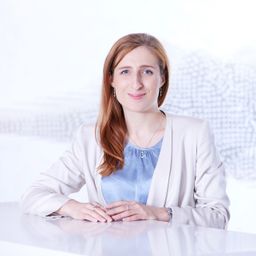Rome Reloaded. Or Industrial Heritage Meets the Arts
My Session Status
What:
Paper
When:
1:30 PM, Wednesday 31 Aug 2022
(20 minutes)
Where:
UQAM, pavillon J.-A. De Sève (DS)
- DS-1580
| Rome Reloaded. Or Industrial Heritage Meets the Arts Since the end of the Industrial Age, the treatment of its heritage has changed from demolition to preservation (Kierdorf/Hassler 2000). In Rome—which is usually not perceived as an industrial city—, over 60 related examples (Torelli Landini 2007) offer a wide field of research regarding visions for its future. Recently, the challenges to reload those artefacts have been accepted also by foreign architects such as Zaha Hadid. The urban palimpsest, moreover, embeds resilience against ‘tabula rasa’, cultivating constant flux (Bosworth 2011). In contrast to prior studies, I intend to show how fragmentation (Edensor 2005) affects the emanation or negation of industrial pasts through architectural and art historical analysis, by contextualizing artistic interventions in today’s residential areas, such as the Flaminio district north to the city center. The paper focuses on the conversion of a former automobile factory (1905-09) in this zone, located 2 km away from Porta del Popolo. The complex—adopted to weapon production and to barracks during WW I—is undergoing restructuring since 1998 and has been integrated into a particular plan of the 6th Master Plan (PRG, Guarini 2010). Simultaneously, in 2003, the MAXXI – National Museum of 21st Century Arts by Zaha Hadid Architects has been replacing the northeast Montello- barracks (Baldi 2006). As my paper aims to convey, this project joins both strategic (Vittorini 2004) and sustainable bottom-up regeneration. After an overview of the area, I will introduce the main actors in this process outlining its top-down dynamics, linked to network analyses (Oevermann/ Mieg 2015). First, I will reconsider the reshaping of the tangible heritage by confronting their preservation practices and design methods in terms of ‘place’ and ‘historic values’ (Valena 2014, Wesener 2014). Remarkably, the MAXXI evolves from the main façade and form of the factory, while most of its substance was demolished (fig. 1). In this way, narratives such as of obsolescence are challenged, which I will elaborate on considering the factory’s qualities—referring to Licata (2005)—as well as the ruptures (Dittmar 2002) emphasized by ZHA’s design. However, it not only visualizes a desire for commemorating ‘industrial legacies’ (Mah 2012), but also for their overcoming, reflecting the barracks as “unpleasant heritage” (Huse 1997) and conflicting field of memories and identities (Berger 2020, Oevermann 2020). Second, drawing upon these arguments, my proposal will open a new perspective on Rome, remodeled also by contemporary artists and curators who engage in social controversies. Examining their outreach, I will discuss the institutional turn starting with the exhibition “Open City Open Museum” (2014) comparing three artworks. Contrary to “More than meets the eye” (fig. 2)—a light installation by Maurizio Nannucci inscribed onto the façade since 2015—a performance related to the neighborhood’s history by Elisa Strinna (2014) and posters with a Gramsci-quote by Alfredo Jaar (2018) have been reactivating the heritage temporarily (Hou 2014, 2018). In conclusion, I argue that with site- specific and urban interventions (Kwon 2004, Suderburg 2002), MAXXI as social forum (Hou 2007, Möntmann 2017) is calling into question its impact as catalyst for the described revitalization. According to my research question about the conditions, causes, and effects that entailed the rediscovering of industrial relics, the interpretation of visual and written sources was combined with findings on transformation and cityscape from cultural studies, art history, and conservation theory (Böhme et al. 2011, Meier et al. 2013, Oevermann/Mieg 2015, Puhan-Schulz 2005). While earlier studies confirmed the phenomenon of conserved “cathedrals of work”, I was able to identify a systemic shift towards aesthetic revaluation in line with a revival of industrial heritage. Industrial Rome, corresponding to my hypothesis, not only leaves room for creative laboratories, but also for ‘another’ past in which citizen participation and cooperation of professional figures turned out to be key. |
